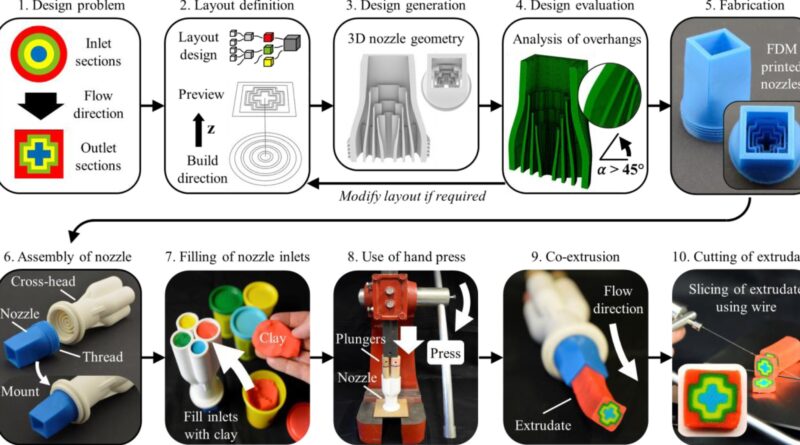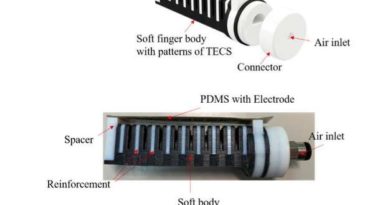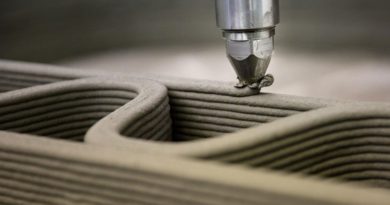ETH Zurich Rechersa Develop Novel DFAM Framework For Multi-Flow Nozzle Designs
A duo of researchers from ETH Zurich have developed a computational Design for Additive Manufacturing (DfAM) framework capable of automating the design of complex multi-flow nozzles.
The framework acts as an alternative to the conventional CAD software used by engineers today, but allows non-specialist users to design complex geometries specifically for additive manufacturing tooling purposes, such as FDM nozzles. The method also enables on-the-fly design iterations and computational fluid dynamics (CFD) analysis on the generated nozzles.
The ability to produce organic shapes is heralded as one of the key advantages of additive manufacturing. What is often overlooked, however, is the actual design phase where concepts materialize and begin to take shape. Despite decades of advancements, the conventional 3D CAD software of today is still based on low-level, primitive foundations, and requires an abundance of repetitive manual steps to produce anything resembling organic.
Topology optimization software has somewhat filled this niche in recent years but still requires a high level of human interpretation and a base model to optimize. It may also not be suitable for certain functional applications involving multiple integrated fluid flows, such as multi-material nozzles. A fully automated novel process is therefore required for such parts, and is, in essence, what the framework tries to accomplish.
The DfAM framework
The DfAM framework provides users with a toolbox of design elements, each corresponding to a certain building block that can be used to generate the final 3D nozzle design. These building blocks are organized in a hierarchical (almost modular) structure and presented in a visual manner, so it’s impossible to accidentally skip a step or component and end up with a non-functional nozzle design. As a result, the framework is very user friendly and can be picked up by non-technical professionals.
Also seeking multi-flow 3D printing, researchers from Harvard University have previously developed a novel method of additive manufacturing they call multi-material multi-nozzle 3D printing, or MM3D. The process consists of a printhead containing multiple channels for the delivery of up to eight different materials through one single nozzle. The nozzle has the ability to switch between channels up to 50 times a second, with Y-shaped junctions preventing any unwanted backflow or mixing of materials.
Elsewhere, demonstrating the power of new design paradigms, a team of six international scientists recently developed a new computational framework for the multi-axis, non-planar 3D printing of polymer parts. The FFF-based technique works by aligning filaments along the direction in which they experience the greatest stress rather than in flat, horizontal layers. This increases the overall strength of the part, with some components showing up to 6.35x strength increases when compared to conventional planar FFF printing.
Source:https://3dprintingindustry.com




